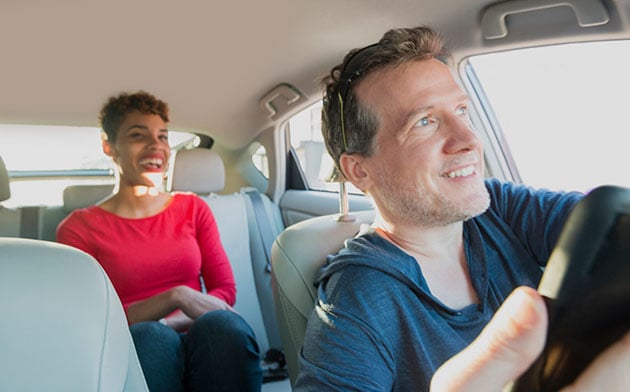Popular rideshare services like Uber and Lyft are now available in larger cities across Oregon, including Eugene.
And for many people, becoming a driver is an attractive way to pick up a little extra spending money. You’ll want to make sure you’re prepared for the associated costs, and that you and your customers are protected, to make it a smooth ride for everyone.

Here are a few questions you should ask yourself before getting behind the wheel as a Lyft or Uber driver.
Will I need special coverage?
Many carriers now require you to purchase extra coverage if you plan on using your car for rideshare services.
“What many drivers don’t realize is that Lyft or Uber may not cover you when you’re en route to pick up a passenger, or if that passenger is injured getting in or out of your car,” says Nick Bloxham, Vice President of SELCO Insurance Services. “That can leave you without insurance if an accident occurs.”
You may find that the insurance provided by Lyft or Uber is too limited for your needs. Having a personal insurance carrier that will pick up where they leave off won’t leave you unprotected. Before deciding on anything, be sure to disclose to your current auto insurance provider that you plan to become a rideshare driver. Failing to do so could cause your insurer to cancel your policy. (Note: If you have a commercial auto policy, separate rideshare coverage is not required.)
Are there gaps in my existing coverage?
Compare your policy with the coverage provided through the rideshare companies you plan to drive for to see if there are gaps. There are basically three stages to check:
- Period 1: When the app is turned on and you’re available to pick up a rider. Rideshare insurance is limited to a small amount of liability coverage.
- Period 2: When you’re en route to pick up a rider.
- Period 3: When you have a rider onboard. For Periods 2 and 3, rideshare coverage is in full effect, but deductibles are high and it may not include personal injury protection (PIP).
Be sure to keep a close eye on that first stage. Once you turn the app on, Bloxham says, many personal auto policies won’t pick up anything beyond the limited coverage provided by the rideshare companies. For Period 1, Uber’s and Lyft’s liability limits of $50,000 per person, $100,000 per incident, and $25,000 for property damage are above state minimums—which could be advantageous for young drivers—but that’s the extent of the coverage.
“Period 1 is the most problematic,” Bloxham said. “If your personal auto policy fills in the gap here, it’s not a problem. But most don’t. Because you basically aren’t covered at that stage, you need to ensure that your personal auto policy works in concert with Lyft and Uber and not against it. If it doesn’t, call SELCO. We have coverage that works in concert.”
Will I earn enough to offset additional costs?
In addition to potential rideshare insurance expenses, don’t forget to factor in gas, maintenance, and wear and tear on your vehicle. Not to mention the most-overlooked expense—depreciation of your vehicle. In the first year alone, the value of a new car can drop by more than 20 percent. Prices vary between insurance carriers, so be sure to gather quotes before you sign up. If you want help reviewing your coverage, contact a SELCO insurance representative. We’d be happy to make sure you’re fully covered. It might also be a good idea to investigate the fuel-economy data of your car before taking the ride-share plunge. Each year, the US Department of Energy (DOE) and US Environmental Protection Agency (EPA) collaborate to put out a fuel economy guide to help consumers make informed decisions when purchasing a vehicle. Visit this website to see the 2025 Fuel Economy Guide as well as detailed fuel-economy data for new and used vehicles dating all the way back to 1984.


